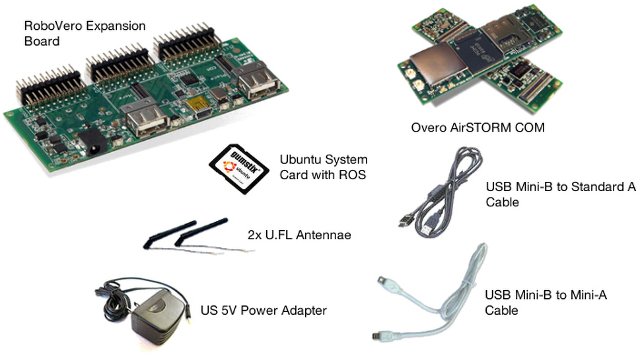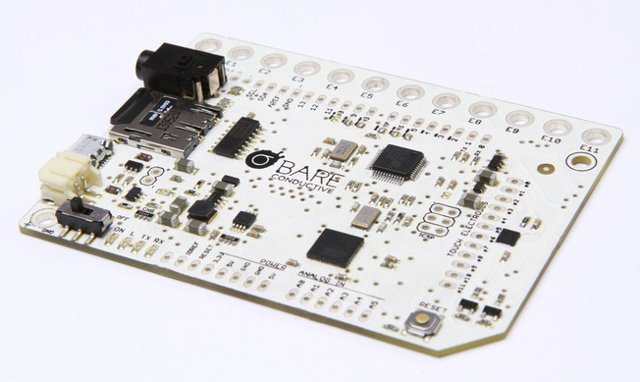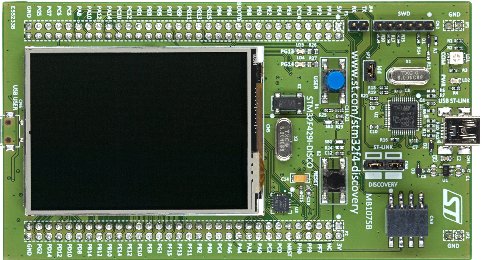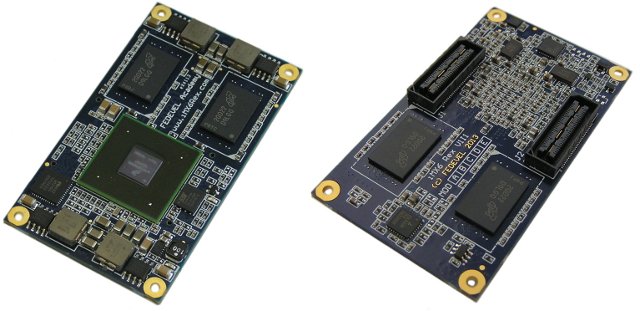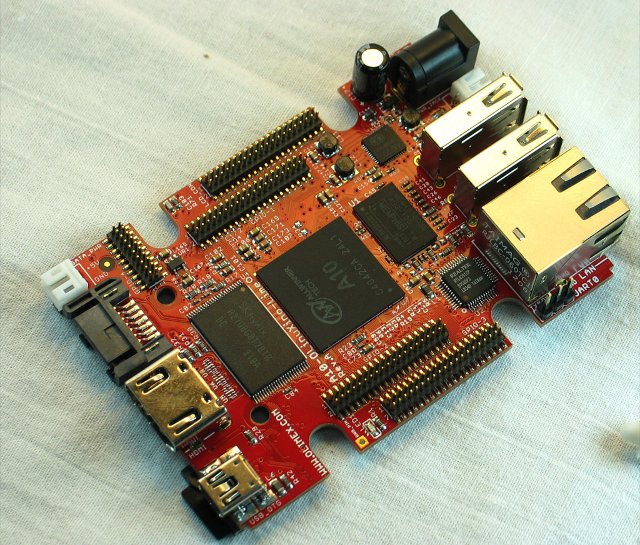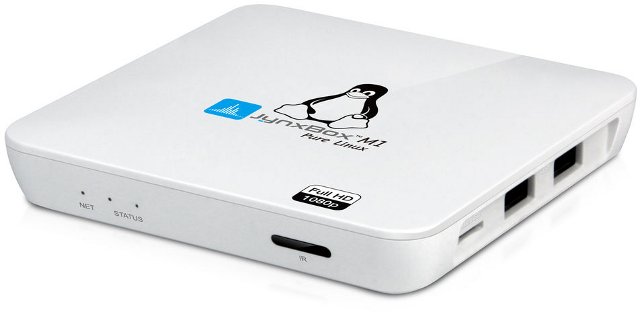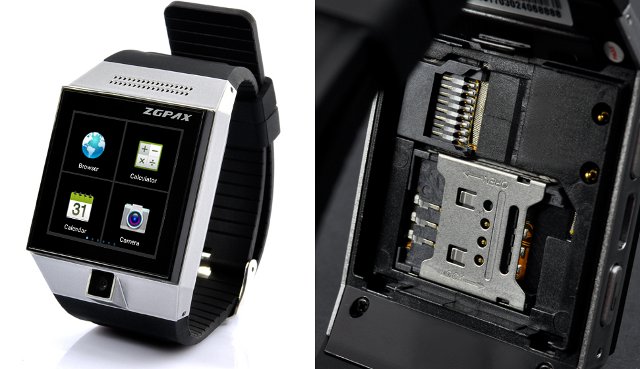More and more companies are jumping on the smartwatch bandwagon. Neptune Computer, a Canadian based startup, has just launched a Kickstarter campaign for the Pine, a watchphone running Android 4.1.2, and featuring a Qualcomm Snapdragon S4 dual core SoC. On the surface it looks very similar to SGPAX S5 smartwatch which also features a dual core processor (Mediatek MT6577), and a SIM card slot, and runs Android 4.0. Neptune Pine, however, comes with features and improvements which may make the 3 to 4 month “kickstarter wait” worth it: a larger 2.4″ detachable screen, larger internal storage, dual camera support, a larger battery providing up to 5 days in standby mode, and an IP67 rating that certifies the device to be dustproof and waterproof at depth of less than 1 meter. Neptune Pine specifications: SoC – Qualcomm Snapdragon S4 Dual-Core Processor @ 1.2Ghz System Memory – 512 MB RAM Storage – […]
Gumstix Announces Solution Kits for their CPU Modules and Boards
Gumstix has recently unveiled several solution kits featuring their Overo and DuoVero Computer-on-Modules (CoMs), Pepper single board computer, and several expansions boards, together with required accessories, and software packages, in order to help their customers getting started more easily. All these solutions are based on Texas Instruments OMAP3, OMAP4, and/or Sitara processors, and run Linux (Ubuntu or Yocto), and sometimes Android for the kits with displays. The solutions kits target 6 different types of applications and/or markets: Robotics Robotic Development Kit (Pictured above) with one Overo AirSTORM CoM (OMAP3703), and RoboVero expansion board. The kit is better suited for motor control applications. Mobile Robotic Development Kit with one Overo AirSTORM CoM, and Turtlecore expansion board to be used with iRobot Create. The kits ship with a Linaro (Ubuntu for Overo) system card and Robot Operating System (ROS) pre-installed. Handhelds 3.5″ Handheld Development Kit featuring Overo AirSTORM CoM with Alto35 cutomizable […]
Almost Anything Can Be A Touch Input with The Touch Board and Electric Paint
Bare Conductive, a British startup, has designed an Arduino Leonardo compatible board with 12 capacitive touch sensors called the Touch Board. You can basically use any conductive material as a touch sensor, but the company’s existing “electric paint” really makes the board come to life, and you can just draw circuit anywhere, be it on paper, your wall, cardboard, and create fun and useful applications. Touch Board specifications: MCU – Atmel ATMega32U4 Microprocessor @ 16 MHz with 32 KB of Flash Memory of which 4 KB is used for bootloader. External storage – MicroSD card slot I/Os: 20 digital I/O pins (3 used for Touch IC and 5 for MP3 IC – can be disabled) 7 PWM channels 12 analog input channels 12 Touch electrodes of which 8 can be configured as extra digital inputs or outputs with PWM capability. (via Freescale MPR121) Audio – Playback and MIDI support via […]
Free Online Courses & Workshops For ARM Cortex-M Microcontrollers
STMicroelectronics and Digikey are co-sponsoring an EE Times University online training course entitled “Fundamentals of Microcontrollers (MCUs): Hands-On Workshop”. The first two 45-minutes sessions will be theoretical and provide and overview of micro-controllers, and explain methods to select an MCU for a given project. The first 1,000 persons based in the US or Canada, who attended the first 2 sessions, will receive a free STM32F4 Discovery Board (ARM Cortex M4). The three next sessions, conveniently taking place about a week later, hopefully after you’ve received your board, will be an actual workshop with STM32F429 Discovery Board. Here’s the detailed schedule for the training: December 2, 2013, 12PM (Eastern Time) – Session 1 – Introduction to Microcontrollers Common microcontroller architectures Pipelining Peripherals: Timers, Communication, Analog December 3, 2013, 12PM (Eastern Time) – Session 2 – Selecting the Right Microcontroller 10 Steps to Selecting a microcontroller What to look for in a […]
iMX6 Rex Open Source Hardware SoM and Baseboard Designed to Teach Schematic and PCB Layout Design
Voipac, a Slovakian manufacturing company, has recently unveiled iMX6 Rex module and iMX6 Rex development baseboard, which have mainly been developed in order to support FEDEVEL Academy Schematic Design and Advanced PCB Layout courses, but can also be used for other purposes. The module is powered by Freescale i.MX6 Dual (Solo and Quad also available on request), and comes with 512MB RAM (upgradeable to 4GB), and up to 32MB SPI flash. The complete hardware will be released under an open source hardware license, but with some caveats as I’ll explain later. iMX6 Rex module specifications (basic configuration): SoC – Freescale iMX6 processor up to 1.2GHz / 2 cores (1 and 4 cores also available) System Memory – 512MB DDR3-1066 (533MHz), up to 4GB Storage – 2MB On board SPI Flash, up to 32MB 10/100/1000 Mbps Ethernet PHY 2 high speed board to board connectors (only one required) with signals for HDMI, […]
Olimex Announces 30 Euros A10-OLinuXino-LIME Development Board for December
The Raspberry Pi, Beaglebone Black and Cubieboard are probably the best selling ARM Linux boards in the sub $50 category, but they’ll soon be joined by Olimex A10-OLinuXino-LIME powered by AllWinner A10 ARM Cortex A8 SoC with 512MB RAM that will sell for 30 Euros (About $40) when it becomes available in December. Another version of the board based on AllWinner A20 dual core Cortex A7 SoC, called A20-OLinuXino-LIME will also be sold, adding Gigabit Ethernet, and scheduled for Q1 2014. Pricing has yet to be disclosed for the A20 version. A10-OLinuXino-LIME specifications: SoC – AllWinner A10 ARM Cortex-A8 @ 1GHz with Mali-400 GPU System Memory – 512MB DDR3 Storage – microSD card slot, SATA, and optional 4GB NAND Flash Video Output – HDMI 1080p USB – USB-OTG + 2x USB Hosts Connectivity – 10/100Mbit Ethernet Expansions – 200 GPIOs on 0.05″ connectors Misc – Lipo battery management and connector, […]
$90 JynxBox M1 Pure Linux XBMC Network Media Streamer
After The Little Black Box (TLBB), there’s now another ARM based media player that comes pre-installed with XBMC Linux: Jynxbox M1 Pure Linux. The device is based on AMLogic AML8726-M1 single core Cortex A9 processor @ 800MHz, and comes with 2GB flash, Wi-Fi and Ethernet connectivity, HDMI output, and more. Jynxbox M1 Pure Linux specifications: SoC – AMLogic AML8726-M1 single core Cortex A9 @ 800MHz with ARM Mali-400 GPU System Memory – N/A (but likely 512 MB) Storage – 2 GB Nand Flash + micro SD/SDHC memory slot (Up to 32GB) Video Output – HDMI 1.3 Audio Output – HDMI Video container formats – AVI, RM/RMVB, MKV, WMV, MOV, MP4, WEBM, DAT(VCD format), VOB(DVD format), MPEG, MPG, FLV, ASF, TS, TP, 3GP Audio formats – MP3, WMA, WMV, APE, OGG, FLAC, AAC, etc… Connectivity – 10/100M Ethernet + 802.11 b/g/n Wi-Fi USB – 3x USB 2.0 host ports Misc – […]
ZGPAX S5 Android 4.0 SmartWatch Features a Dual Core Processor, a SIM Card Slot
The newly introduced Samsung Galaxy Gear and Sony SmartWatch all work as a smartphone companion, and have limited use if you don’t carry your smartphone with you. The Samsung watch also requires a recent smartphone running Android 4.3 and supporting Bluetooth Low Energy, which current seriously reduces the list of compatible smartphones. There are already standalone smartwatches in the market that include a SIM card slot, and allow you to make phone calls without a phone such as Z1 watch and WiMe NanoWatch. However, these watches feature low-end hardware with ARM9 processor, so the interface may feel a bit sluggish. ZGPAX S5 smartwatch with its Mediatek MT6577 dual core Cortex A9 processor, and 512 MB RAM, will be much more snappier. It runs Android 4.04 with Google Play Store, and comes with features such as a camera, GPS, as well as Wi-Fi and Bluetooth connectivity. SGPAX S5 Specifications: SoC – […]



